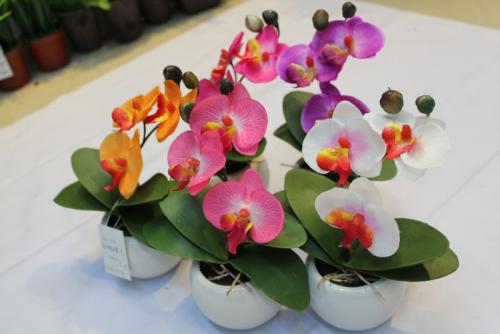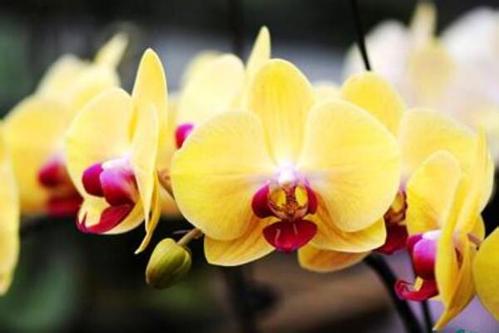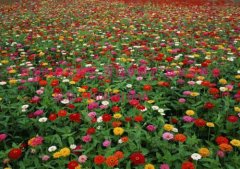How to grow Phalaenopsis? Introduction to the planting and Culture methods of Butterfly Orchid
How to grow Phalaenopsis? What problems should be paid attention to when planting, and what common diseases and insect pests will there be in the process of planting? let's take a look.
Phalaenopsis originates mostly in the temperate rainforests of Asia because it is shaped like a butterfly. Is currently the most popular orchid, because the flowers are large, beautiful and long-lasting. Phalaenopsis belongs to the air root category, is a tropical orchid, and requires high humidity.

In general, even if the temperature is enough, the humidity is not enough (except in hot and humid areas like Florida or Taiwan). So many people who specialize in orchids have a greenhouse. If you don't have a greenhouse, you can often spray around, or put several pots of flowers together to increase humidity. Another way is to put the basin in a shallow dish, which is filled with pebbles pebbles, and put some water in it to give off moisture. But do not let the bottom of the basin touch the water, so as not to rot the roots. There should be temperatures above 18 degrees Celsius even in winter. It is best not to be too high during the day, even in summer, and 24 to 27 degrees is the most suitable (75 to 80 degrees Fahrenheit).)
For orchids to blossom, there must be light. But Phalaenopsis does not like direct sunlight. After all, it is overcast in the rainforest. So it is appropriate for windows with light in the room, preferably in the morning or afternoon, rather than in the midday glare (screen windows can be used to block the light). In addition, pay attention to the light in winter, so that the effect of flowering next season is good. But if the indoor light is not enough, you can use fluorescent lights to assist, about a thousand light, a distance of one foot is enough. The lights must be turned off at night.)
In terms of fertilization, orchid fertilizer is applied about once a month, or average fertilizer. Because there is no potted soil, it must be thin and fat. Fertilization is suspended during flowering and after flowering.

Many people don't know how to take care of them after the flowers fade. In fact, as long as let it rest, according to the above watering and fertilization, blossom again in the second year. If you see that the root is too developed and the basin is not enough, you can change the basin. Or the plant material has been broken for a long time, or it can be replanted in a new pot. When changing the basin, you can check the root for rotten parts and cut it off with clean scissors. Scissors must be sterilized before use.)
Many people ask whether the pedicel should be cut after Phalaenopsis blossoms.
The basic principle is that as long as the withered part of the pedicel is cut off, the green part does not need to be cut. Because if the plant itself is to blossom, it will regenerate a new pedicel. In addition, some orchids blossom on the original stalks, so it is feasible not to cut the old branches.
But for veterans, it depends on the situation. When there are only one or two flowers left, experienced people will use pruning to make them bloom one more time. That is, three nodes are numbered from the base and cut off at about half an inch on the node. If the plant is healthy enough, a short stem will grow here in about two or three weeks and blossom for the second time, with a flowering period of about a month. The second time has fewer flowers, but it is equivalent to prolonging the flowering period. To use sterilized scissors, the scissors can be smeared with any kind of fungicide such as sulfur powder to avoid infection, or you can use cinnamon powder cinnamon to achieve disinfection. Too young plants are not suitable for this and should be allowed to rest and grow.)
But if you see a new leaf growing after the flower fades, don't force it to bloom a second time, but let it grow new leaves first, rest for a while, and then bloom. Most large-flowered Phalaenopsis, including pink and white, fall into this category. When the flower fades, cut the pedicel off from the base, so that the plant will concentrate on growing new leaves and reserve the strength for the next flowering. The plants will also be stronger.
There are also some original species of Phalaenopsis whose flowers always bloom on the same pedicel, so there is no need to cut them. So you can ask when you buy it. The safest thing is to cut off only the withered part.)
Now you know how to plant Phalaenopsis. If you encounter a place where you can't, you should also know how to do it. I hope your Phalaenopsis is healthy.
- Prev

Orchid planting: how to grow orchids? Planting methods and techniques of Orchid
Do you know how to plant orchids? What is the method of planting, what should be paid attention to in planting, and how to apply fertilizer? Let's take a look. There are many kinds of orchids, so it is difficult to explain the planting of orchids in a few words. But yes, Jane.
- Next

In what season do grass flower seeds grow? Grass flower seed sowing time how to sow grass flower seed?
What problems do you encounter when you plant flowers? have all your questions been answered? If not, you can see if there are any answers you want to know below. Q1. I know the planting of grass flowers is seasonal, but I'm not sure how to divide it. It's like petunia is a cooler season.
Related
- Fuxing push coffee new agricultural production and marketing class: lack of small-scale processing plants
- Jujube rice field leisure farm deep ploughing Yilan for five years to create a space for organic food and play
- Nongyu Farm-A trial of organic papaya for brave women with advanced technology
- Four points for attention in the prevention and control of diseases and insect pests of edible fungi
- How to add nutrient solution to Edible Fungi
- Is there any good way to control edible fungus mites?
- Open Inoculation Technology of Edible Fungi
- Is there any clever way to use fertilizer for edible fungus in winter?
- What agents are used to kill the pathogens of edible fungi in the mushroom shed?
- Rapid drying of Edible Fungi

